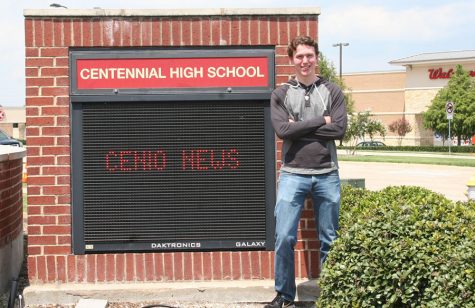Do you know the whole story?
January 14, 2015
Unarmed black teen, shot by police two days away from starting college.
Did I get your attention? Doesn’t a sentence like that make you mad, make you want to learn more, maybe take some action? That was a headline of my own creation relating to the recent case in Ferguson Missouri. Let’s try another headline for the same incident.
Violent robber shot and killed by police officer.
It’s still interesting, but now the man who was killed sounds like the one at fault. I didn’t make up any information in both of the headlines above, all the facts are true, but the way I said it and the details I included changed what you thought of the parties involved, the side you felt like taking.
The way information is presented is everything, not just in headlines but also in articles and broadcasts, a journalist doesn’t have to lie to make you choose a side.
The core purpose of News teams and journalists is to present the news in an honest, ethical, and unbiased way. Yet I just demonstrated that if I’m slightly bias to one side or the other it’s so easy to change how you feel about a story without even having to change the facts.
On the first page of a Google search for “Michael Brown” here’s a couple of the first headlines you see:
NBC: Michael Brown, an unarmed black teen, was shot and killed by police in Ferguson, Missouri.
CNN: Missouri teen shot by police two days away from starting college.
News teams in the interest of making a “good story” are focusing only the details that benefit their side.
On the CNN website I had to navigate through two and a half pages of stories taking Michael Brown’s side before I found one that gave a perspective of the police officer involved.
What I’m getting at is, news teams aren’t doing their job. They are presenting the news with a bias twist, usually for the underdog. This is especially obvious in the recent Michael Brown case in Ferguson.
People heard what happened, through the slightly bias news programs, they get mad, so the riots and protests start. Once evidence comes up showing that the officer was probably not guilty, the news didn’t ignore it, but they pushed this evidence to the backburners, and continued fueling the fire of the protests.
The news gave the people what they wanted to hear, something to get mad about.
Those who rioted wanted to hear things like:
- Michael Brown was eighteen and two days from starting college
- Michael Brown held his hands up before he was shot six times (according to witness)
- The officer involved decided to randomly search the two men
Since that’s what the public wanted to hear that’s what we were given. So while those facts were extremely easy for me to find I had to dig for a while before I found facts like these:
- Michael Brown had smoked pot and robed a store the same day he was killed
- He violently charged the officer who was responding to the robbery
- Michael Brown never raised his hands above his head (according to autopsy)
Those are the facts, all of them. I’ll let you make your own decision to who was at fault but that’s not what’s important. What matters is how the news was involved in this entire story.
Because of the facts that the news chose to include front and center in these stories people who didn’t dig very much got angry and joined the riots. (I’m not saying it’s their fault they trusted that the news would give them the whole story and they didn’t)
News teams haven’t been doing their jobs, they give us the story, they give us the facts but they don’t give all of them, in interest of making a good story. This has huge consequences, as we’ve witnessed in the riots in Ferguson.
So next time you hear a story on the news that inspires you to try and make a change, make sure you dig and get all the facts before you take action.



